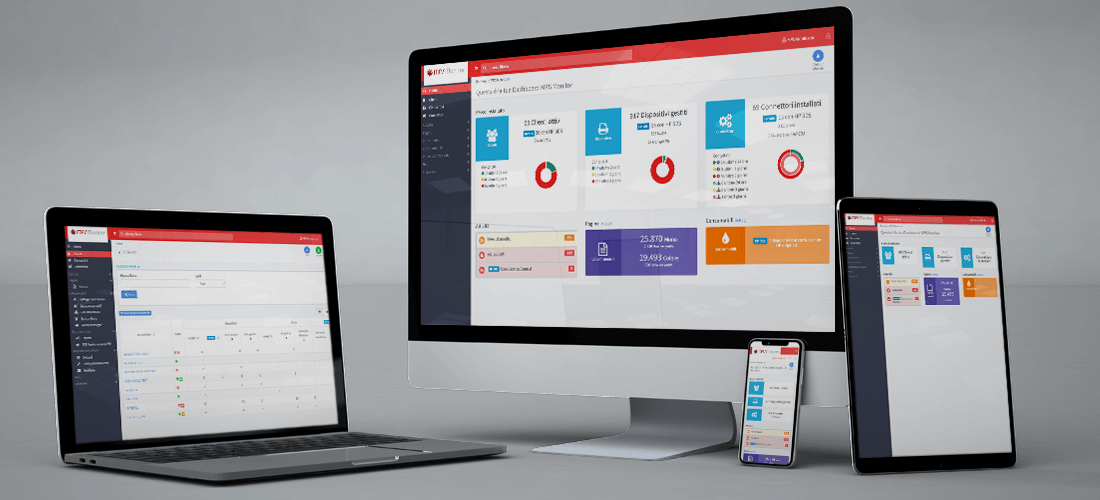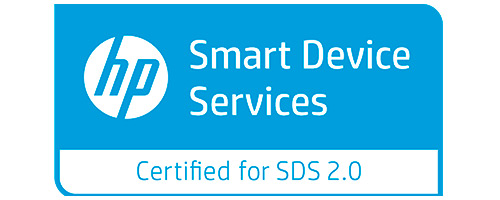MPS Monitor 2.0 is the most complete and advanced print fleet management available on the worldwide market. Its unique ease of use, reliability of data flow, security and flexibility make it the optimal choice for any dealer who manages a fleet of printing devices at customers’ premises, and wants to improve service levels, while reducing costs.
MPS Monitor is the ideal solution to gain full control and proper cost management of the printer fleet. The system allows Dealers and Service Providers to:
- Remotely monitor the devices installed at the premises of your customers / users;
- Thanks to MPS Monitor Analytics, the complete Business Intelligence platform integrated in the solution, access in real time all the data and indicators of volume, consumption, average coverage, duration and frequency of consumable exchanges;
- Check the status of consumables;
- Receive and manage alerts from devices, including messages on the operator panel, e.g. alerts related to low consumables;
- Carry out the page counter readings on the devices;
- Maintain a database logging all events and data related to the devices;
- Perform searches, including complex ones, and generate reports on all data retrieved from the devices;
- Conduct a comprehensive management of the contracts related to the devices, whether they are based on cartridge consumption or cost per page;
- Integrate with any database system, ERP, CRM, or other software dedicated to the management of device fleets and related services.
MPS Monitor is the best choice for the Dealer, because it is:
- Multibrand – full software compatibility is guaranteed for all printer and MFP models connected to the network that meet the RFC 3805 Printer MIB v.2 SNMP specifications;
- Web-Based – available as a Cloud-based service accessible via the internet through any browser;
- Based on Standards – data collection via SNMP and processing on Cloud-based platform;
- Secure – uses secure communication protocols and secure access to customer data; hosted within an Information Security Management System certified under ISO/IEC 27001:2014;
- Easy to implement – the Customer installs the data-reading software on their network very easily, and from that moment the data can be managed from any web access on any device (PC, Tablet, Smartphone, etc.). The platform also provides a strong data import engine that allows an extremely easy upload of data from Excel files into the MPS Monitor database. The adoption of this platform, without losing any previous customer and business data, is even quicker.
System architecture
The system consists of 2 main parts:
- Agent eXplorer Data Collection Agent (DCA): this component must be installed on the Client’s LAN and performs the reading operations following the instructions provided by the server component. The information is transmitted to the Server components using a secure channel with HTTPS protocol. For the readings, the Client software uses the SNMP protocol. It is a prerequisite for the service that the eXplorer has HTTPS access to the Server components. Agent eXplorer is available in three different versions:
-
- eXplorer DCA for Windows – can be installed on any PC or Server with Windows operating system – for more details see this page;
- eXplorer DCA for Apple or Linux – can be installed on Apple Mac systems, or on Linux Debian/Ubuntu systems, or even on Raspberry PI3 – for more details see this page;
- eXplorer Embedded DCA – can be installed directly on the following printers/multifunctional units: Samsung with XOA firmware, Kyocera with HyPas firmware, HP with FutureSmart 3 or 4 firmware, Lexmark with EsF firmware – for more details see this page.
- MPS Monitor Portal: The Server component is accessible via Cloud service. The user accesses a dedicated Web Portal, designed according to the most advanced User eXperience Design techniques and developed with the latest generation of web technologies. The Portal is accessible over HTTPS protocol and authentication with user name and password, with various security profiles for access, and can be customized with the customer’s logo. Through the access to the Server, it is possible to perform all the operations of device and contract management, and to produce all the reports and data extractions, available both in Excel and PDF format.
The system provides advanced data export functions in the most popular formats (Excel, CSV, XML, PDF, etc.). Furthermore, a set of APIs is available, collected in a comprehensive Software Development Kit (SDK), which allows the data to be integrated into any external system.
Try MPS Monitor for free on your fleet
MPS MONITOR IS A PARTNER OF
CERTIFICATIONS



















